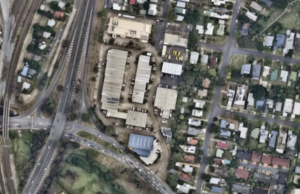70ha of Industrial Land Unlocked To Build Homes

Brisbane City Council has unlocked more than 70ha of “tired old commercial sites”, fast-tracking rezoning to allow mixed-use development across the city.
Former industrial sites across Brisbane will be available for “much-needed” residential and mixed-use development in what Lord Mayor Adrian Schrinner suggested would be the first of a series of land releases.
The 14 Suburban Renewal Precincts vary in size from less than 1ha to 16 hectares. Some are unused while others are already in the early stages of redevelopment.
“Thousands of new homes can be delivered through this 70ha identification that we’ve made,” Schrinner told The Urban Developer.
While the project is at an early stage, he also suggested that there would be a consideration of affordability for the new homes.
“Obviously we’re really conscious of the affordability issues at the moment, we’re conscious of the fact that there’s very limited supply. And when there’s limited supply, there’s upward pressure on housing prices.
“By adding supply into the mix, we can help moderate that house price pressure, and that’s the critical thing.”
Currently the work is under way to rezone the areas, and then owners and developers will be able to make applications through the usual routes.
“We’re doing the planning work, and it will require the multiple different owners of each property to put in proposals to us based on our planning work, we’ll then make an assessment of every application that comes in as we normally do.”
The first tranche of sites identified are:
- Hyde Road, Yeronga (12ha)
- Glenora Street, Wynnum (0.15ha)
- Bonemill Road, Runcorn (16.3ha)
- Mina Parade, Alderley (6.4ha)
- 35 Hamilton Road, Moorooka (1.15ha)
- 123 Muriel Avenue Moorooka (3.2ha)
- Gladys Street, Stones Corner (0.32ha)
- McIlwraith Avenue, Norman Park (0.09ha)
- Top Taste factory, Gympie Road, Kedron (11.7ha)
- Fairlawn Street, Nathan (6.9ha)
- Sandgate Road, Nundah (1.3ha)
- Burke Street, Dutton Park (1.6ha)
- Newmarket Road, Wilston (8.2ha)
- Newnham Road, Wishart (2.6ha)
Infrastructure was a key concern when unlocking the sites for residential development.
“The other thing we’ve looked at here with these sites is that they’re well located to public transport.
“There’s a great opportunity in Bone Mill Road in Runcorn, which is currently an old factory site, it’s very large. And it’s right near a train station, a perfect opportunity to bring people to where the public transport already is.”
However, as the council makes moves to reduce the industrial land in Brisbane, there have been conflicting concerns about the dearth of industrial land in Brisbane, which resulted in the announcement of Brisbane City Council’s latest industrial strategy, Our Productive City.
“This is the issue that we had a really close look at—what are our industrial needs as a city?
“[It’s about] getting the right balance there—we know that the nature of industry is changing as well, and changing for the better,” the mayor said.
“Industry is less dirty and less polluting than it has been in the past, and there are different types of industries that are popping up.
“A great example is the really massive increase in craft breweries that we’ve seen pop up in Brisbane, in just the last 10 or so years, a massive increase in that industry.
“Our strategy in the industry needs to change. But we need to make sure that we evolve as the industry evolves.”
Creating neighbourhood precincts could also detract from recovery in the CBD, as people are less likely to travel to central Brisbane if they have the amenities they need in their local suburb. But Schrinner was not concerned about this move, saying that the CBD continued to recuperate.
“The CBD will continue to be the preeminent employment hub for the city,” he said.
“But we’re also making sure that there’s a diversity and a spread of jobs throughout the suburbs as well.
“And these suburban precincts can not only provide homes for people, but also employment opportunities as well, because there’ll be potentially retail opportunities and other maybe even office accommodation opportunities in the suburbs too. We’re looking forward to seeing that mix coming up in the suburbs.”
The mayor indicated that this would be the first wave of rezoning, but that there would be more to come.
“This is just the beginning. This is stage one of identifying potential precincts across the city. There will be more that will come online, no doubt.”